Access Resource Kit (ARK) - Disability Services Commission
Access Resource Kit (ARK) - Disability Services Commission
Access Resource Kit (ARK) - Disability Services Commission
Create successful ePaper yourself
Turn your PDF publications into a flip-book with our unique Google optimized e-Paper software.
PEOPLE WITH DISABILITIES<br />
Paraplegia and Quadriplegia<br />
Both conditions result from injury to the spinal cord. This injury causes muscle paralysis<br />
and sensory loss. Injury to the spinal cord occurs at different levels and this determines<br />
the severity of the condition.<br />
The most common causes of spinal injury are falls, diving and traffic accidents. Most<br />
people with these conditions experience problems with mobility and are often reliant on the<br />
use of a wheelchair.<br />
Other disabilities<br />
There are many other disabilities that have a significant impact on the lives of people and<br />
which may affect their ability to use a service or facility. These include:<br />
arthritis;<br />
acquired brain injury;<br />
stroke; and<br />
psychiatric and behavioural disabilities.<br />
Planning to overcome access barriers<br />
The main type of disability in Western Australia is physical disability which affects 69 per<br />
cent of people with disabilities.<br />
Planning for people with disabilities will also provide benefits to other members of the<br />
community who may be disadvantaged in terms of access. Examples include:<br />
• parents with prams and seniors who find it difficult to negotiate steps or steep<br />
gradients;<br />
• people who have a temporary disability through accident or illness;<br />
• tourists and people from culturally and linguistically diverse backgrounds who may<br />
find it difficult to read signs or understand information; and<br />
• small children who have difficulty climbing steps or understanding information.<br />
People with disabilities face barriers to everyday activities such as hearing what is said,<br />
seeing small print, climbing stairs or understanding signage. The impact these barriers<br />
create on the life of the person concerned can be major, particularly if the individual has<br />
multiple disabilities.<br />
People with Disabilities and Planning for <strong>Access</strong> (Aust Standards updated February 2011)1.5



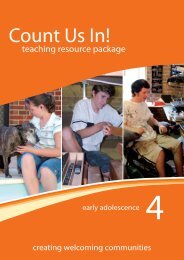
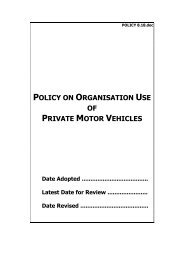
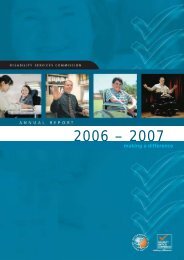


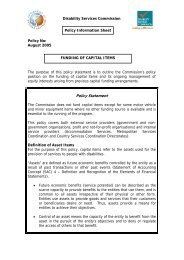
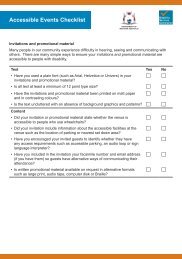
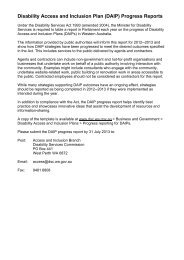
![Heerarka Adeegyada Naafada [PDF 102 kB] - Disability Services ...](https://img.yumpu.com/22096139/1/184x260/heerarka-adeegyada-naafada-pdf-102-kb-disability-services-.jpg?quality=85)
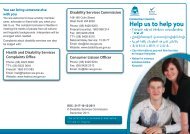
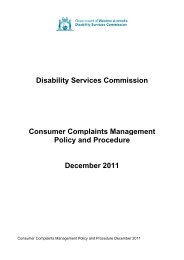

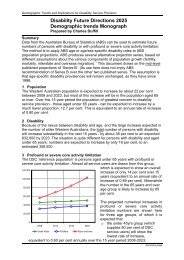
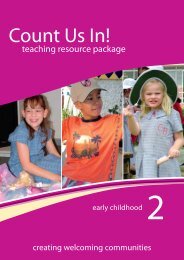
![معايير خدمات الإعاقة [PDF 297 kB] - Disability Services Commission](https://img.yumpu.com/22096120/1/184x260/-pdf-297-kb-disability-services-commission.jpg?quality=85)